Formation of the Department of Anesthesiology and Intensive Care
In 1966, a course in anesthesiology and intensive Care was organized at the Department of Surgery of Tashkent Institute of Postgraduate Medical Education under the guidance of Associate Professor Magdalena Alexandrovna Romanova. In 1970, under the guidance of Professor Zaraza Semyonovna, the course was transformed into a department. Aza Semyonovna Zarzar headed the department for 22 years, being the chief specialist of the Ministry of Health of the Uzbek SSR, she led the organization of the anesthesiology and intensive care service in the republic, created a republican society in the specialty and made a great contribution to the development of anesthesiology and intensive care in Uzbekistan.

Romanova Magdalena Alexandrovna

In 1966, a course in anesthesiology and intensive Care was organized at the Department of Surgery of Tashkent Institute of Postgraduate Medical Education under the guidance of Associate Professor Magdalena Alexandrovna Romanova.
In 1992, the Department of Emergency Medicine, organized under the leadership of Professor Sabirov Jurabai Marifbayevich, was joined to the Department of Anesthesiology of and Intensive Care, and the department continued its work under the name "Anesthesiology of and Intensive Care and Emergency medical care".
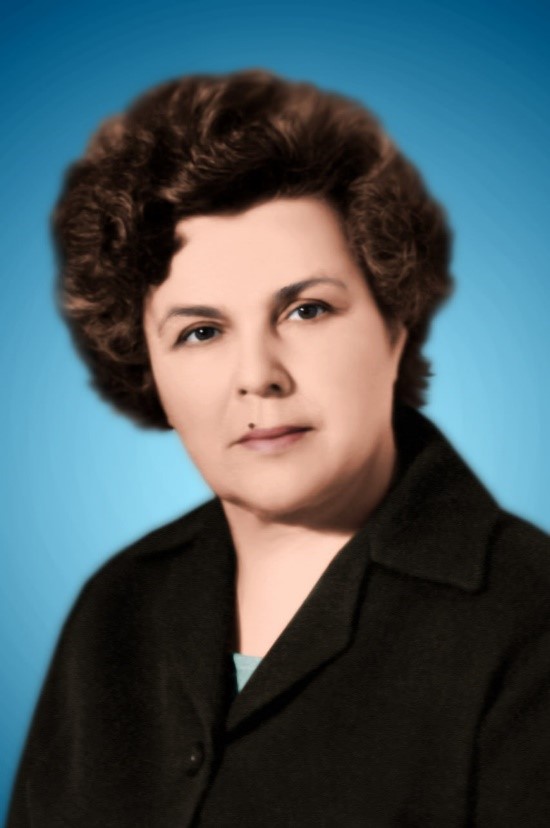
Zarzar Aza Semenovna
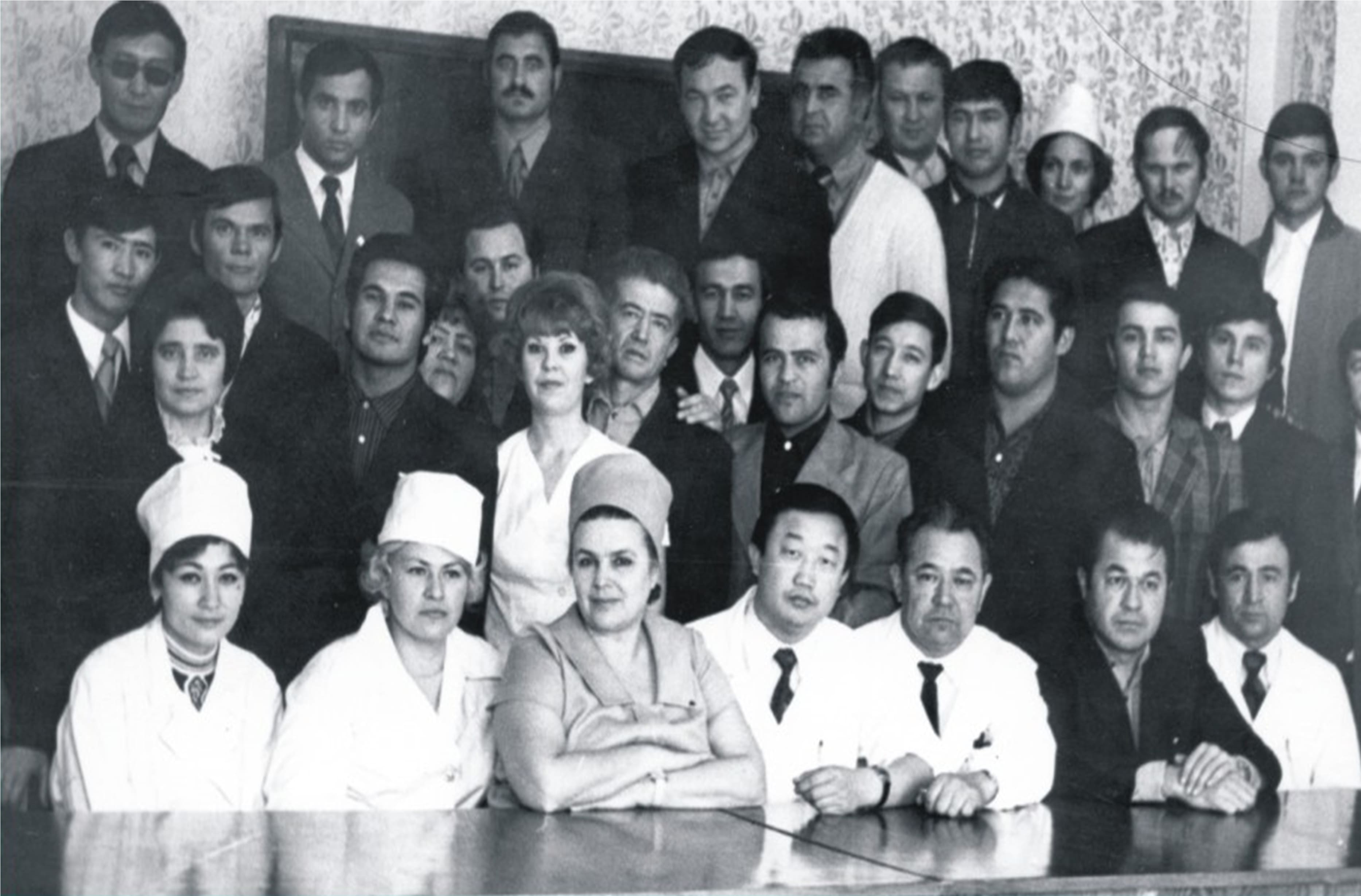
1973 – Department of Anesthesiology and Intensive Care with
Professor A. S. Zarzar
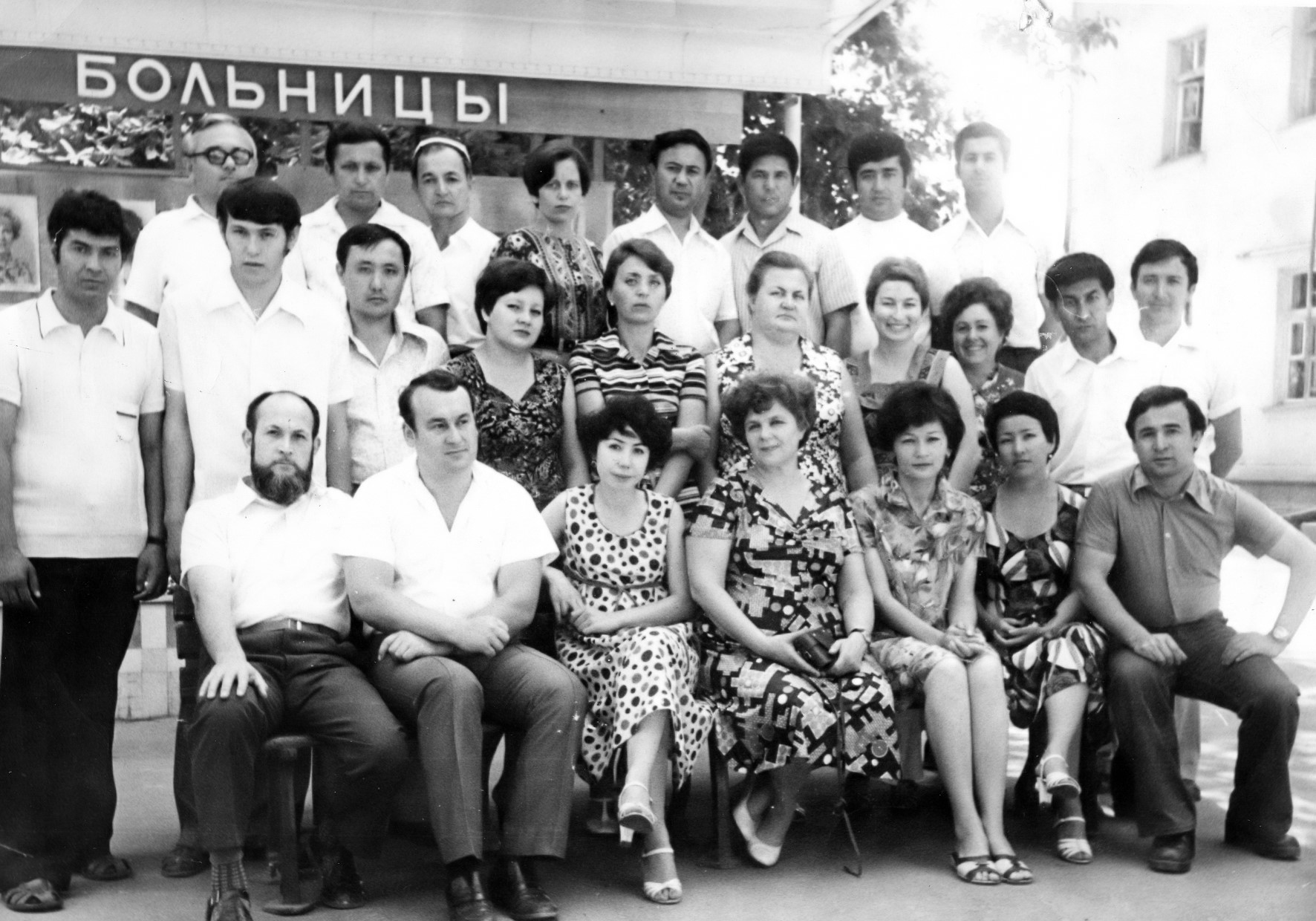
1975 cycle of specialization in anesthesiology and intensive care
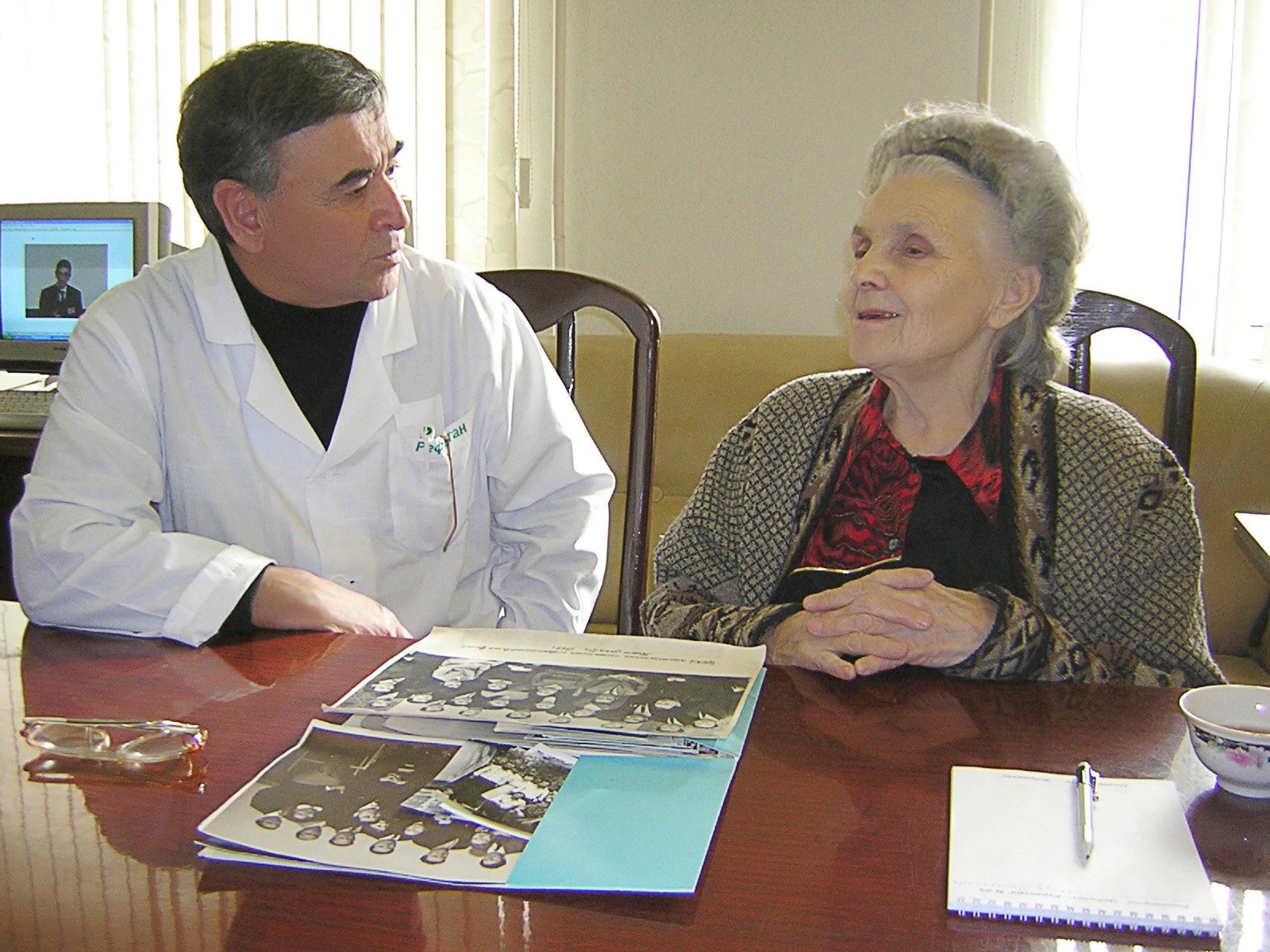
Zarzar A.S. and Sabirov D.M., 2002.
Since the beginning of the department's organization, the scientific direction of the department has been "Anesthesia and intensive care in patients with hypertension". Currently, research is underway on the topic of "Anesthesia and intensive care in critical conditions".
ACADEMIC WORK
The Center for the Development of Professional Qualification of Medical Workers houses the Department of Anesthesiology and Reanimation. This department has been the sole educational center for training highly skilled anesthesiologists and rheumatologists for the government since 1966.
The staff of the department provides qualified advice to patients in the intensive care unit on a daily basis. Assistants are assigned to an unlimited number of patients in the department. They perform anesthetic operations not only in elective surgery, but also in rapid surgery. In addition, consultations are held in other surgical departments, and they participate in consultations.
The department is led by Doctor of Medical Sciences and Professor, Djurabay Marifbaevich Sabirov. Currently, the department has one professor, two associate professors, and several assistants who teach specialization, thematic, and general training cycles.
The department offers various thematic training cycles that are of great interest to trainees. These include "Principles of Creating an Infusion Program in Clinical Practice," "Anesthesia, Resuscitation, and Intensive Therapy in Multi-organ Failure," and "Modern Principles of Regional Blockades." In addition, the department conducts a training process for doctorate and clinical residency. Every year, 15-20 clinical residents are trained and sent to healthcare practices.
Doctors are trained by the Republican Scientific Center for Emergency Medicine and the 1st City Clinical Hospital named after Ibn Sina. During the training cycle, doctors learn to work with modern anesthesia and artificial respiration devices in the hospital's departments and operating rooms. Cadets also participate in anesthesia and intensive treatment of patients alongside department staff to get familiarized with modern medicine practices.
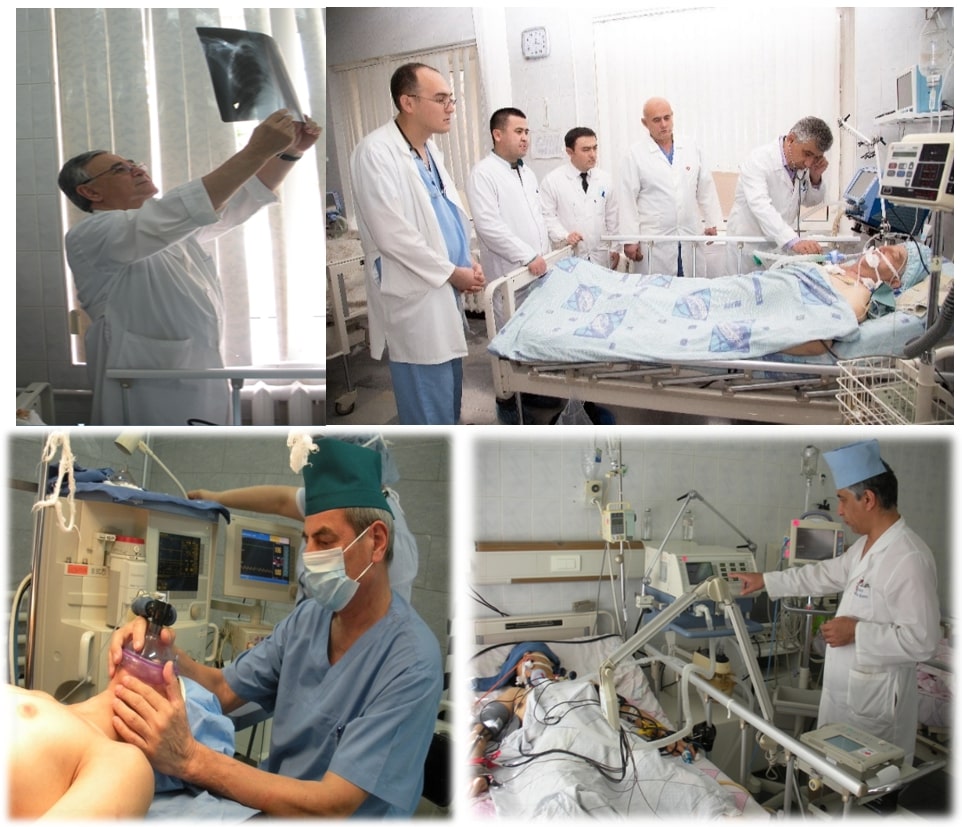
Every year, the employees of the department embark on a one-month traveling cycle to the center of one of the regions of the Republic. During this cycle, they attend lectures and visit intensive care units, demonstrate new methods of anesthesia, and participate in clinical conferences.
The department is equipped with a range of teaching equipment, including a multimedia projector, TV, VCR, overhead computer, computers, two simulators (a human model), video cassettes, posters, Internet access, and slides for each teacher's lecture. All of these tools are designed to enhance the effectiveness of the educational process.
SCIENTIFIC WORKS
During the activity of the department, the main areas of scientific research were the issues of intensive treatment of arterial hypertension and acute respiratory failure. Original methods of anesthesia in endocrine and renal hypertension have been developed. Breath control and high-frequency lung artificial ventilation methods have been applied in clinical practice in cases of status asthmaticus.
More than 350 scientific works, including 10 monographs and 85 methodological recommendations, have been published by the staff of the department. Copyrights were obtained for 15 inventions.
The department has 5 doctors of medical sciences: Mukhitdinova H.N., Sabirov D.M., Atakhanov Sh.E., Garib V.F., Sharipova V.Kh. and 15 candidates of medical sciences: Pavlova R.A., Bozina E.Yu., Yuldashev F.A., Basitkhanova E.E. , Kim E.V., Khodjaeva A.A., Sharipova V.Kh., Saidov A.S., Muradova N.B., Sharapov F.E., Koirov A.K., Yarashev A.R., Rosstalnaya A.L., Haydarova S.E. etc. prepared.
Today, the subject of the main scientific direction of the department is: "Development and implementation of new methods of anesthesia and intensive therapy in various critical situations."
Work is being carried out on this topic in the following directions:
Research is being conducted to develop methods of general anesthesia based on intrapleural analgesia in practical surgery when the chest is traumatically injured.
The optimal methods of artificial and assisted ventilation in patients undergoing long-term artificial ventilation of the lungs have been developed.
The usefulness of preventive anesthesia in surgery has been proven in a large clinical material. It has been shown that the cost of narcotic analgesics is lower, complications after surgery are reduced, and the length of hospital treatment of patients is reduced.
New methods of combined epidural analgesia and general anesthesia have been developed, which effectively protect the patient from operative stress in long traumatic and reconstructive operations.
Research is being conducted on various methods of invasive and non-invasive monitoring of cerebral perfusion pressure in cases of cerebral hemorrhage.
Currently, the department is conducting research in the field of:
Effective methods of artificial respiration that reduce the adverse effects of abdominal hypertension on the cardiovascular and respiratory systems have been implemented and guidelines for these have been developed.
Research is being conducted on pathogenetically based complex intensive therapy methods based on indicators of cerebral blood flow and metabolism in combined and single brain injuries.
Personalized respiratory support in patients with concomitant severe traumatic brain injury.
Basics of adequate provision of energy-plastic needs in acute cerebral insufficiency.
Differentiated intensive care of cerebral edema and swelling in severe brain injury
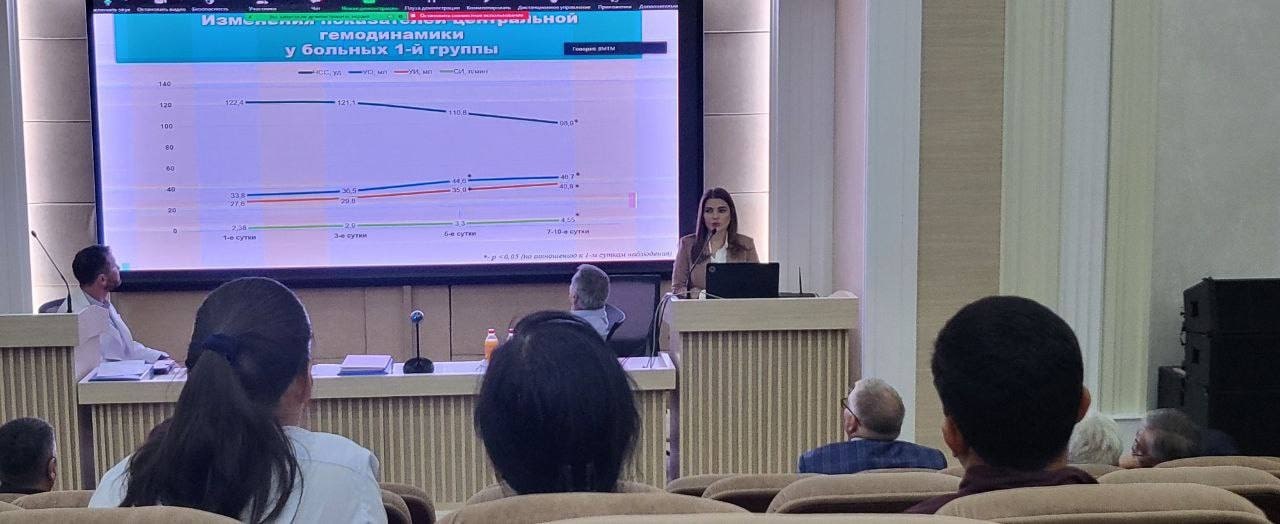
TREATMENT WORKS
The clinical base of our department was located in the 15th city clinical hospital in 1966-1971, in the 17th city clinical hospital in 1971-1974, and in the 1st city clinical hospital in 1974-2000. Since 2001, he has been working in RRCEM. Since 2017, the second base of the department has been 1st City Clinical Hospital.
The staff of the department provides daily qualified advice to patients in the intensive care unit . Assistants are given an unlimited number of patients . They also perform anesthesia in planned surgery, but also in emergency surgery. In addition, consultations are conducted in other surgical departments, and they participate in councils.

Up to now, the department's employees carry out treatment directly in the RRCEM, that is, in the departments of surgical and therapeutic and resuscitation, as well as anesthesiology. In addition, during training, doctors get acquainted with the practice of general therapeutic intensive care and resuscitation, cardioresuscitation and pediatric intensive care and resuscitation departments. RRCEM intensive care and resuscitation departments are equipped with modern equipment and equipment that meet the requirements of the time. There are 20 places in the surgical intensive care unit. Professor Sabirov D.M. and associate professor Batirov U.B. conduct regular consultations in this department. Rosstalnaya A.L. and Khaydarova S.E. are in treatment process of the department of neuroreanimation. Department of Anesthesiology employees in 8 operating rooms from traumatological, neurosurgical, endosurgical, abdominal, thoracoabdominal, urological, vascular surgery and gynecological departments to 25-30 patients will provide different anesthesia daily. Assistant Makhmudov M.A. consults in the Department of Anesthesiology. The 1st city clinical hospital is the second clinical base of the department, in the intensive care and resuscitation department, prof. Nosirov Sh.N. participates in the treatment of patients. Department employee Abdullaeva Kh.N. conducts lectures and practical training basically about regional anesthesia at the "Nano Medical" clinic.
In addition to lectures, during the traveling courses at provinces centers, providing one month in year, the department's staff conducts visits to intensive care units, demonstrates new methods of anesthesia, and participates in clinical conferences.
From the 1st to the 13th of every month, the staff of the department are on duty for the republican emergency aviaservice and help even the most remote regions of our republic.

